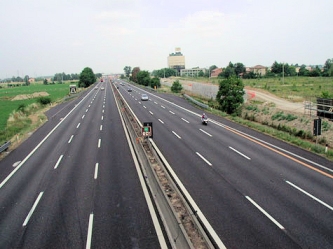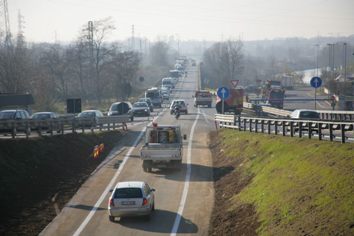
Ci sono molte ragioni per non vivere vicino ad una strada trafficata: il rumore, la cattiva qualità dell'aria, il flusso interminabile di turisti persi che utilizzano il vialetto per far manovra. Ma un nuovo studio pubblicato in Environmental Health Perspectives riferisce che i bambini che vivevano vicino ad autostrade alla nascita era due volte a rischio di autismo.
I ricercatori hanno intervistato ed esaminato 304 bambini con autismo e, come controllo, 259 bambini con sviluppo tipico di Los Angeles, San Francisco e Sacramento aree metropolitane. I ricercatori hanno trovato che i bambini le cui famiglie hanno vissuto all'interno di 1.000 piedi da una superstrada alla nascita - circa il 10% dei bambini dello studio - sono stati il doppio di probabilità di avere l'autismo.

The link held up after controlling for other variables such as maternal age, parental education and smoking. Interestingly, however, the same effect did not apply to kids who lived near other heavily trafficked streets. The researchers theorized that the type and sheer quantity of chemicals distributed on highways are different from those on even the busiest city roadways.
"This study isn't saying exposure to air pollution or exposure to traffic causes autism," lead author Heather Volk, researcher at the Saban Research Institute of Children's Hospital Los Angeles, told the Los Angeles Times. "But it could be one of the factors that are contributing to its increase." (More on Time.com: Photos: A Journey into the World of Autism)
As LAWeekly points out, however, another recent study looking at autism clusters in the Los Angeles area found that rates of the disorder were higher in upper-middle-class neighborhoods where residents had higher-than-average levels of educational attainment or were located near major autism treatment centers (highway proximity wasn't part of the equation). Presumably, the higher autism rates were due at least in part to better surveillance — something that tends to be lacking in lower-income communities. (More on Time.com: 1 in 5 Kids With an Autistic Sibling Show Subtle Symptoms Too)
There is no cure for autism, and researchers are still looking for its cause — some combination of genes and environment. In recent years, scientists have made headway in identifying certain changes that characterize the autistic brain, which may help lead to earlier diagnosis. Earlier diagnosis, in turn, may potentially lead to earlier intervention, and researchers think early treatment can mitigate autistic symptoms or may in some cases prevent the disorder altogether.
Two weeks ago, a team of neurologists from Harvard and the University of Utah reported using an MRI brain scan to identify boys and men with autism with 92% accuracy. And earlier this year, a study in the journal American Journal of Psychiatry found that 20% of normally developing siblings of autistic children also had language delays and subtle speech problems — similar but milder than those common in autism — adding evidence to the argument that genes play a role.